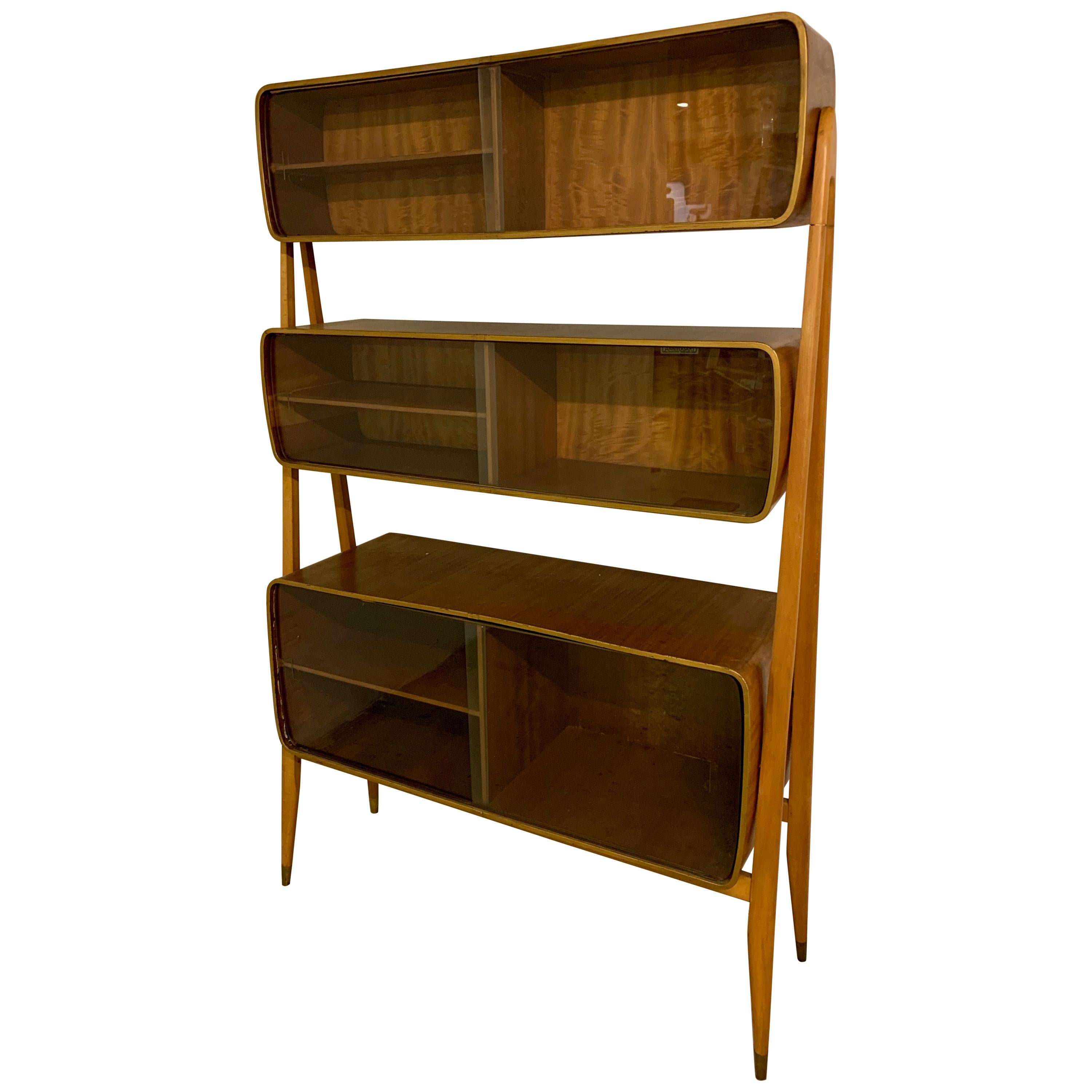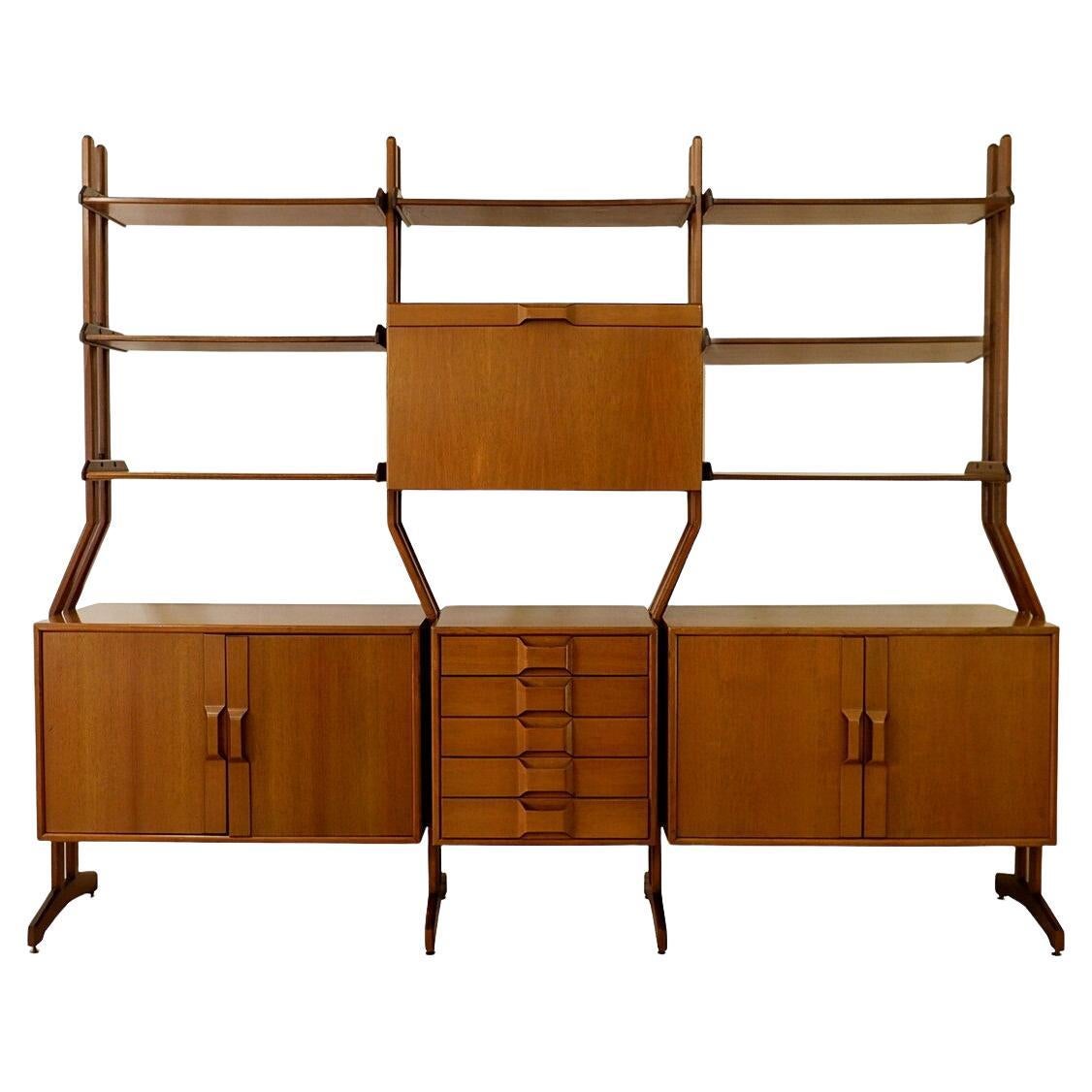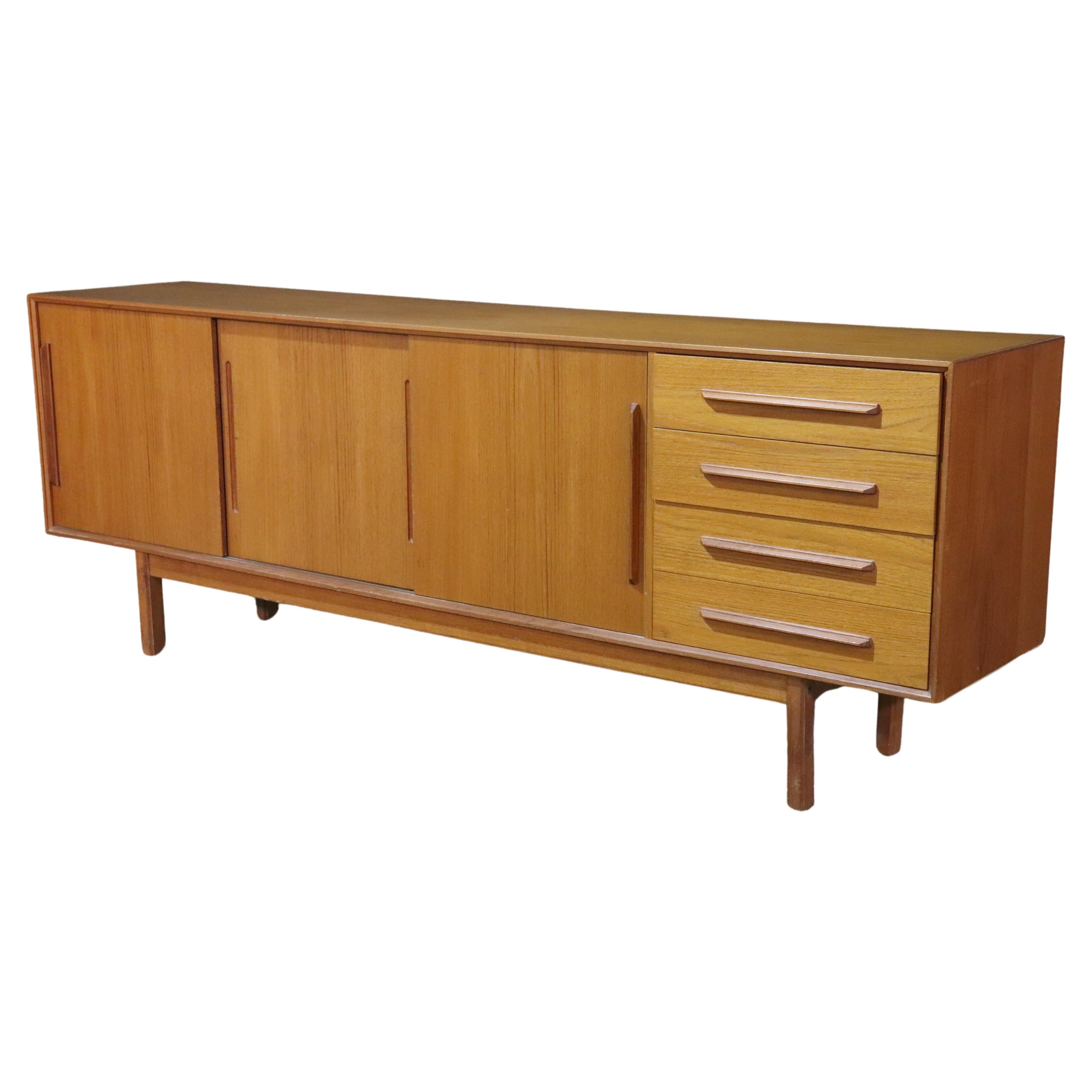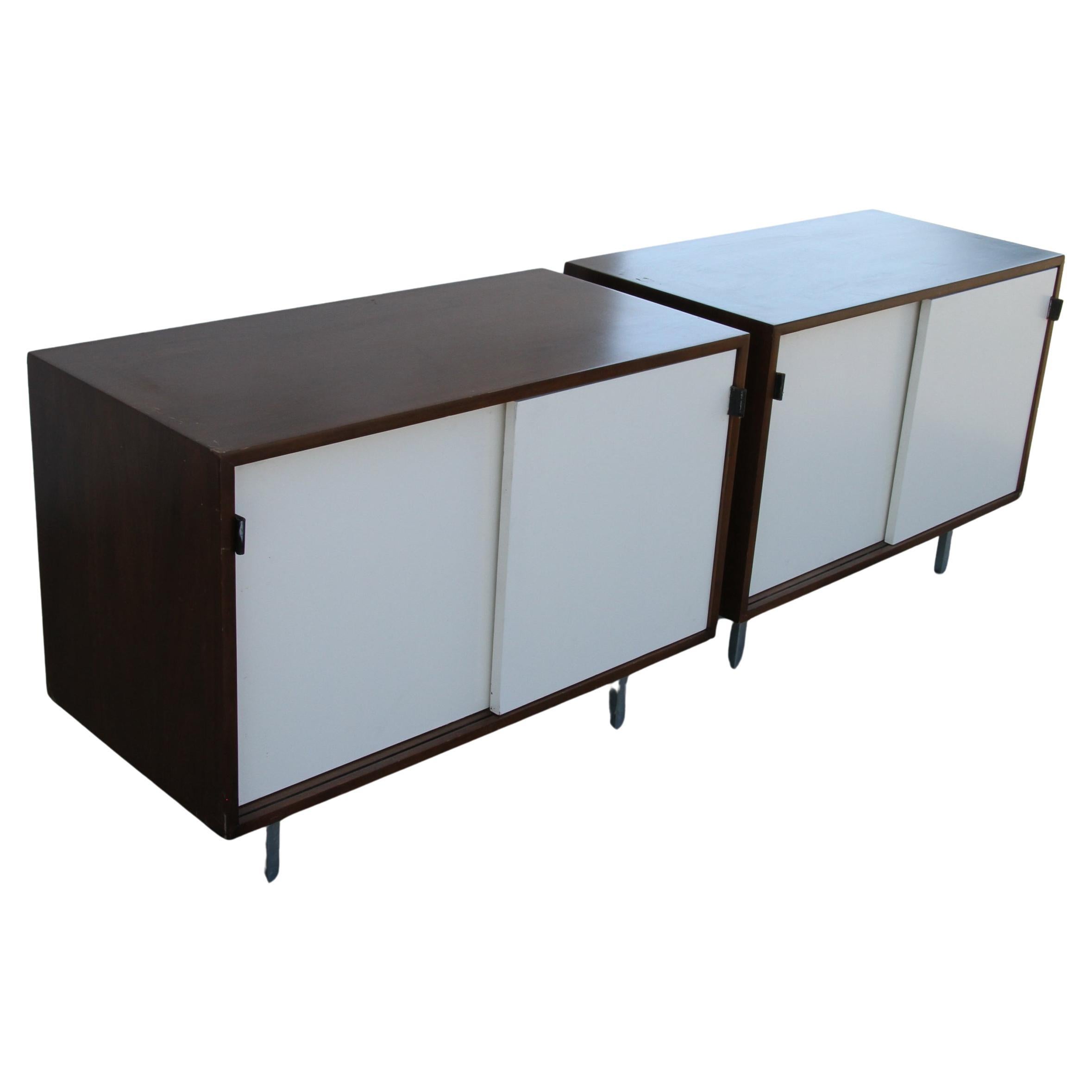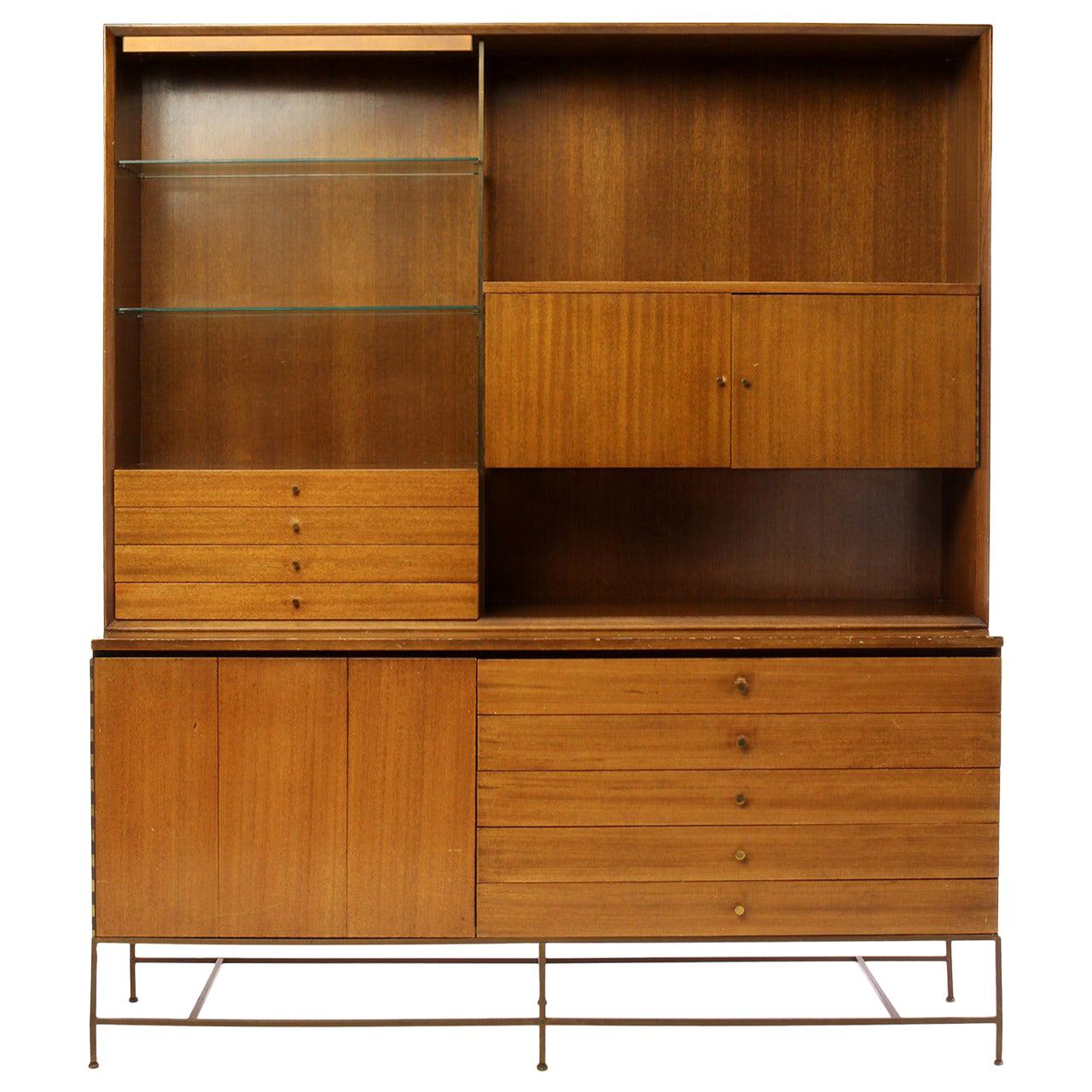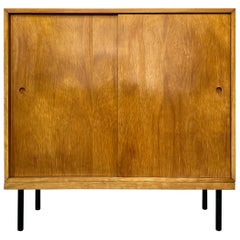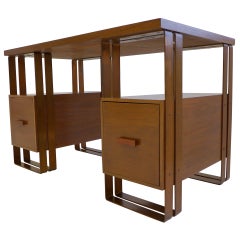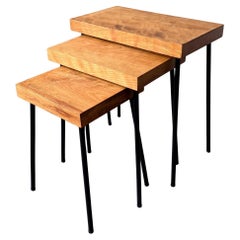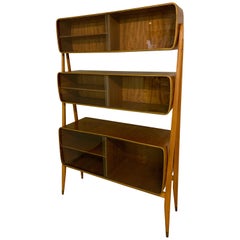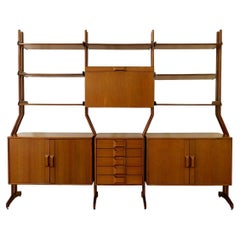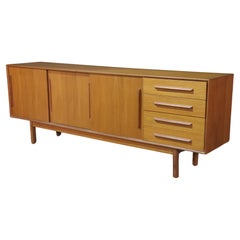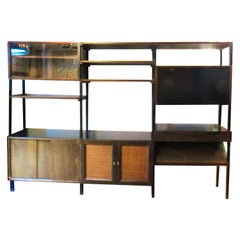Items Similar to Carl Koch Techbuilt Spacemaking Furniture
Want more images or videos?
Request additional images or videos from the seller
1 of 21
Carl Koch Techbuilt Spacemaking Furniture
$45,000per set
£34,055.28per set
€39,114.28per set
CA$63,992.17per set
A$69,380.70per set
CHF 36,563.48per set
MX$843,736.97per set
NOK 454,907.79per set
SEK 430,190.22per set
DKK 292,010.06per set
About the Item
Unit furniture of Philippine mahogany with white Masonite panels consisting of a module with sliding Masonite doors and a double wide module with an open front. Designed by Harvard-educated, Boston-area architect, designer, and urban planner Carl Koch as a corollary to his prefabricated Techbuilt houses and produced in 1955.
Koch was a pioneering champion of prefabrication in housing in mid-century America, first with his much-publicized but ill-fated all-steel Lustron houses in the late 1930’s, then with his more successful wooden Tech-Built houses, introduced in 1953. In At Home with Tomorrow, his 1958 paean to prefabrication, he lays out his opposition to the traditional hammer-and-handsaw construction methods that remained dominant even with conceptually modernist structures. His designs generally hewed to a regional brand of modernism rather than orthodox international style, taking into account local topography and climate—his iconic form is an A-frame with a pitched roof, more sensible in New England winters than a flat roof (though there are such Techbuilt designs). The basic Techbuilt formula suggested that modular, industrial production methods of the components combined with knock-down shipping and on-site assembly equalled lower cost and less waste. Variety and individuality could be achieved in how the elements were combined.
This underlying philosophy involving modularity, flexibility, and industrial production methods applied to Spacemaking furniture as well, although interestingly enough, the furniture design preceded the architectural application, as Koch (et al) had submitted a version to the 1947 MoMA Low-Cost Furniture Competition (and so these units also preceded the famous 1951 Eames Storage Unit, a conceptually similar idea executed with metal framing). The furniture line began with requests for freestanding wardrobe closets and then extended by modules to include 21 different basic pieces of furniture including chests, shelves, room dividers, and desks. All were shipped knocked-down and could be assembled with just a screwdriver. Per the Spacemaking literature, the buyer could arrange the composition himself, and change it around or add to it as desired. When purchased along with a Techbuilt house, the cost of the furniture could even be folded into the mortgage.
Though conceptually elegant, useful, and visually appropriate to modernist interiors, Spacemaking furniture was produced only in two very short runs in 1955, sharing the same fate as numerous designs by architects and designers who attempted to manufacture and market their own furniture designs. By Koch’s own assessment, the furniture proved too costly to make, despite its prefabricated nature, and a number of the components did not meet quality expectations. Only the wardrobes (basically taller versions of the present units) remained in production. While it is unknown how many Spacemaking units were placed in Techbuilt houses outside the ones photographed in the literature (and some of these photo shoots may have been staged), it is doubtful that many orders were placed outside the Techbuilt program. I have never encountered any examples other than the ones here, nor have the editors of a website devoted to Techbuilt housing. A rare opportunity to acquire an architecturally resonant and historically significant design. Price is for the set of two pieces--the sliding door unit is freestanding; the open unit shares a central post and screws together to form a single double-wide piece. Provenance: Removed from a Techbuilt house outside of Boston. The attached architectural photograph came along with the furniture, and may be the source. Note: shelves are not included with the cabinets (foam core place markers were used in the photographs) but can be supplied after purchase.
- Creator:Carl Koch (Designer)
- Dimensions:Height: 29 in (73.66 cm)Width: 148 in (375.92 cm)Depth: 13 in (33.02 cm)
- Sold As:Set of 2
- Style:Mid-Century Modern (Of the Period)
- Materials and Techniques:
- Place of Origin:
- Period:
- Date of Manufacture:1955
- Condition:Replacements made: Shelves are not included but can be supplied after purchase; the foam core place markers in the photographs suggest white glass replacements. The shelf pins would also be replacements. Everything else is original. Wear consistent with age and use. Minor losses. Minor structural damages. The Masonite panels and doors have been cleaned and polished. The Philippine mahogany has been lightly refurbished to enhance the original finish. Wear consistent with age and use remains visible.
- Seller Location:New York, NY
- Reference Number:1stDibs: LU828531293162
About the Seller
4.9
Recognized Seller
These prestigious sellers are industry leaders and represent the highest echelon for item quality and design.
Gold Seller
Premium sellers maintaining a 4.3+ rating and 24-hour response times
Established in 1995
1stDibs seller since 2007
260 sales on 1stDibs
Typical response time: 1 hour
Associations
20th Century Specialists
- ShippingRetrieving quote...Shipping from: New York, NY
- Return Policy
Authenticity Guarantee
In the unlikely event there’s an issue with an item’s authenticity, contact us within 1 year for a full refund. DetailsMoney-Back Guarantee
If your item is not as described, is damaged in transit, or does not arrive, contact us within 7 days for a full refund. Details24-Hour Cancellation
You have a 24-hour grace period in which to reconsider your purchase, with no questions asked.Vetted Professional Sellers
Our world-class sellers must adhere to strict standards for service and quality, maintaining the integrity of our listings.Price-Match Guarantee
If you find that a seller listed the same item for a lower price elsewhere, we’ll match it.Trusted Global Delivery
Our best-in-class carrier network provides specialized shipping options worldwide, including custom delivery.More From This Seller
View AllMid-Century California Unit Furniture Group
By Brown Saltman
Located in New York, NY
Unit furniture group with a California mid-century vibe, possibly a DIY project, comprising four boxes, all of Douglas fir plywood, sitting atop a plinth base, presented here in a sk...
Category
Vintage 1940s American Mid-Century Modern Cabinets
Materials
Wood, Masonite, Plywood
$7,500 / set
Art and Trade Shop Unit Cabinet
By Eero Saarinen
Located in New York, NY
Custom and well-crafted modular sliding-door cabinet produced by Eric R.E. Schuster of the Art and Trade Shop of New York City in the early 1940s. Styl...
Category
Vintage 1940s American Mid-Century Modern Cabinets
Materials
Birch
Donald Deskey Machine Age Desk
By Donald Deskey
Located in New York, NY
Rare desk in walnut and banded copper-plated aluminum, designed by Donald Deskey and produced by Ypsilanti Reed Furniture Company, circa 1929. A strong statement of Machine Age aesth...
Category
Vintage 1930s American Art Deco Desks
Materials
Copper
David Wurster Nest of Tables for Raymor
By Raymor, David Wurster
Located in New York, NY
Nest of three tables with birch tops and blackened tubular steel legs. Designed by David Wurster and produced for Richards-Morgentau (Raymor) circa 1952. Wurster's lighting was a reg...
Category
Vintage 1950s American Mid-Century Modern Nesting Tables and Stacking Ta...
Materials
Steel
$6,000 / set
Tepper-Meyer Versi-Table
By Gene Tepper
Located in New York, NY
Up-and-down "Versitable" by Tepper-Meyer Associates of San Francisco, produced by Fred Meyer circa 1954. The two-position design can function as a dining or writing table in the high...
Category
Vintage 1950s American Mid-Century Modern Dining Room Tables
Materials
Steel
$2,800 / item
James Bearden Segment Etagere
By James Bearden
Located in New York, NY
"Segment Étagère” a sculptural work in torch-cut and polychromed steel with fused bronze, solvent dyes, and glass enamel, with four glass shelves. By American artist James Bearden. The rectangular étagère, with its dramatic yet delicate composition and juxtaposition of shapes and colors drawn from Bearden’s evolving vocabulary, is perched atop four slender legs. Bearden's work was featured in a 2020 solo exhibition at the NY Design Center titled "James Bearden: Technical and Aesthetic Revelations," in an article in the January 2017 Interior Design Magazine; in an introspective feature on 1stdibs; and in a feature article in DSM Magazine. The étagère is part of a group of case pieces being offered individually--see the photo of three cabinets below. Custom sizes and colors are available upon request. In an introduction to the 2020 exhibition, curator Kartrina Weinberg wrote: "In the two years after the artist’s last solo exhibition — where the material reality of steel was evident in both its title and monochromatic appearance — Mr. Bearden sought to break free from pre-conceived judgment of his medium, as well as the persistent misnomers applied to his art. While subtle color play has always existed in his previous works, the development in his coloring technique — from painted polychrome to dyed glass enamel — allowed for dramatic saturation and stunning complexity in his new palette, bringing heightened immediacy to his biomorphic and anthropomorphic imagery. The artist had always challenged the gravitational reality of steel, but he has found new expressions towards verticality and delicacy, transcending material and elevating function. The open compositions, ranging from ornamental tracery to dynamic use of negative space, allow for the interplay of light and air, animating the environment with ever-changing viewing possibilities. This exhibition took inspiration from the naturalist traditions and fantastical imagery of Early Netherlandish paintings...
Category
2010s American Mid-Century Modern Vitrines
Materials
Bronze, Enamel, Steel
You May Also Like
Wonderful Display Storage Attributed to Franco Campo & Carlo Graffi
By Franco Campo & Carlo Graffi
Located in Munich, DE
Very elegant and rare storage.
Category
Vintage 1950s Italian Mid-Century Modern Cabinets
Materials
Plywood
Mid century Modern Italian Wall Unit - 1960s
Located in Uccle, BE
Mid century Modern Italian Wall Unit - 1960s
Wear consistent with age and use / See Photos
Category
Mid-20th Century Italian Mid-Century Modern Shelves
Materials
Metal
Ib-Kofod Larsen Designed Mid-Century Server
By Ib Kofod-Larsen
Located in Brooklyn, NY
Ib-Kofod Larsen for Faarup Møbelfabrik long sideboard, made in Denmark. Beautiful teak grain throughout with sculpted wood handles. Ample storage with cabinets space...
Category
Mid-20th Century Mid-Century Modern Credenzas
Materials
Teak
Noral Olson Designed Wall unit
By Noral Olson
Located in Brooklyn, NY
Large wall unit by Noral Olson for Kopenhvn, with three attaching bookcases. Each standing bookcase has unique cabinets and compartments in walnut with bla...
Category
Mid-20th Century Mid-Century Modern Bookcases
Materials
Walnut
$3,000 Sale Price
33% Off
Knoll Leather Handle Cabinets
By Knoll
Located in Pasadena, TX
These linear Knoll cabinets are to die for.
The striking contrast of walnut and white laminate is a definite eye catcher. The chrome legs bring this cabinets to the precipice of luxu...
Category
Vintage 1960s American Mid-Century Modern Cabinets
Materials
Leather, Laminate, Walnut
$3,835 Sale Price / set
35% Off
Etageres by Paul McCobb for Calvin Furniture, 1950s
By Calvin Furniture, Paul McCobb
Located in Sagaponack, NY
A well scaled Mid-Century Modern étagère in bleached walnut designed by Paul McCobb. The cabinet or shelf set is constructed in solid walnut wood and brass and features two separate ...
Category
Mid-20th Century American Mid-Century Modern Secretaires
Materials
Brass
More Ways To Browse
Mid Century Modern Modular Desk
Ship Desks
Philippine Mahogany
Eames Storage Unit
Eames Unit
Brass Cabinet Mastercraft
Tiger Oak
Used Kitchen Shelves
Used Maple Kitchen Cabinets
1800s Cabinet
Antique Mirrored Shelf
Polychrome Cabinet
Dior 1971
Carved Oak Doors
Antique Ebonised Cabinets
Antique Shop Displays
Used School Cabinets
Antique Door Molding
